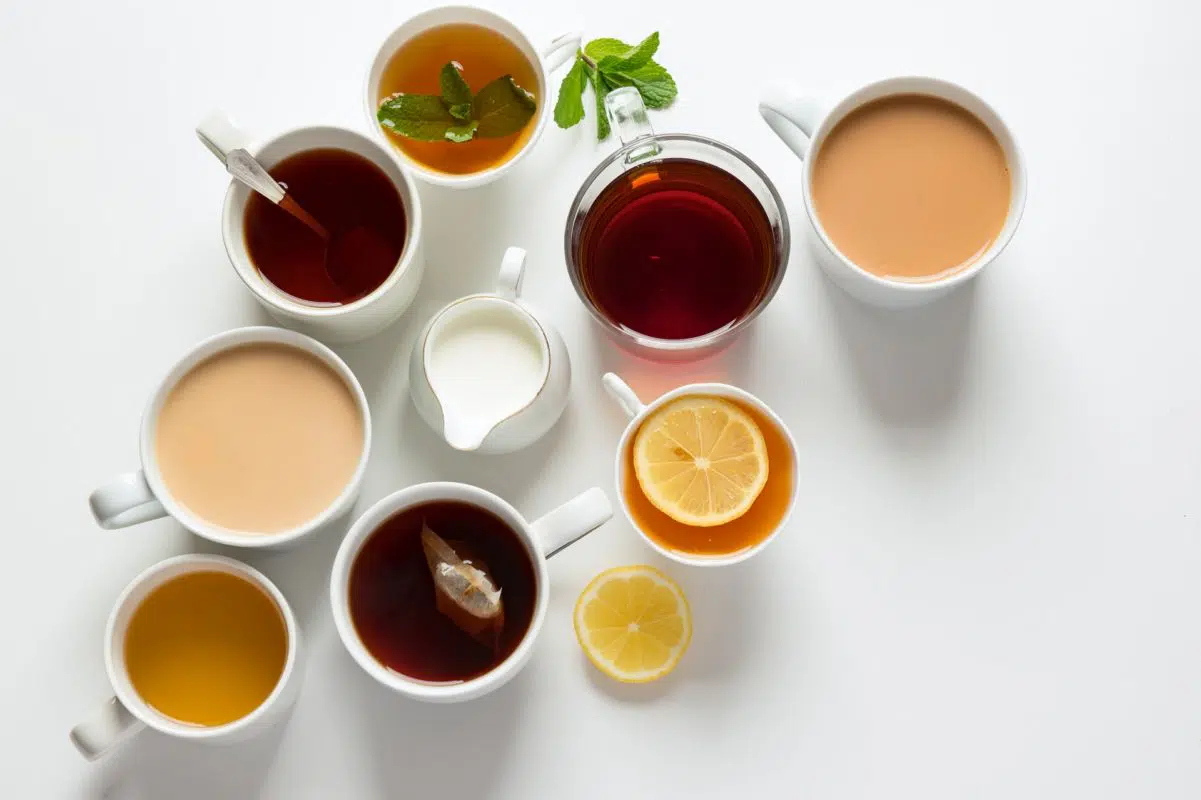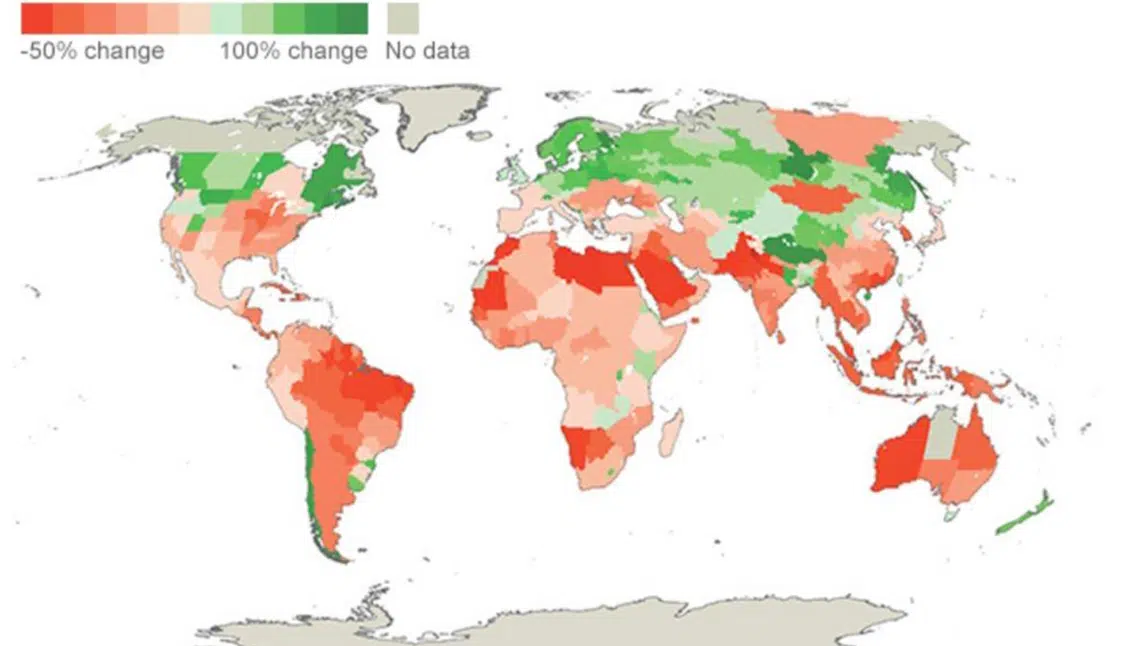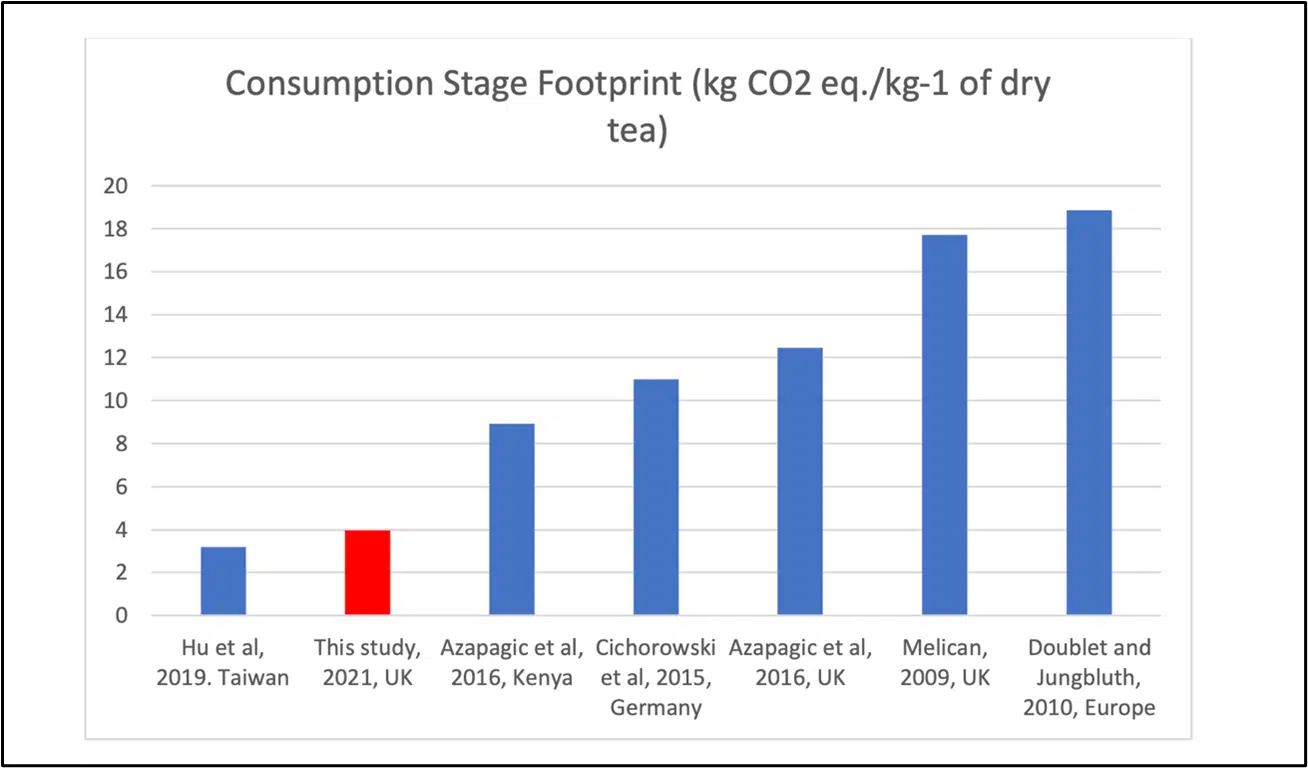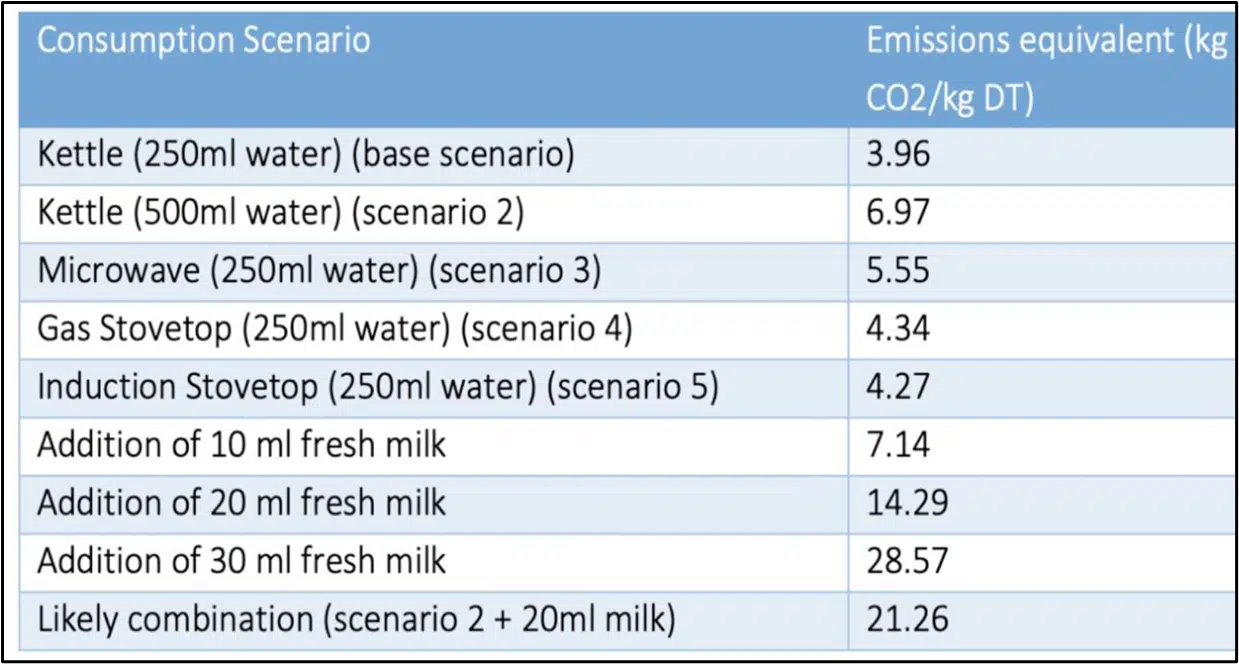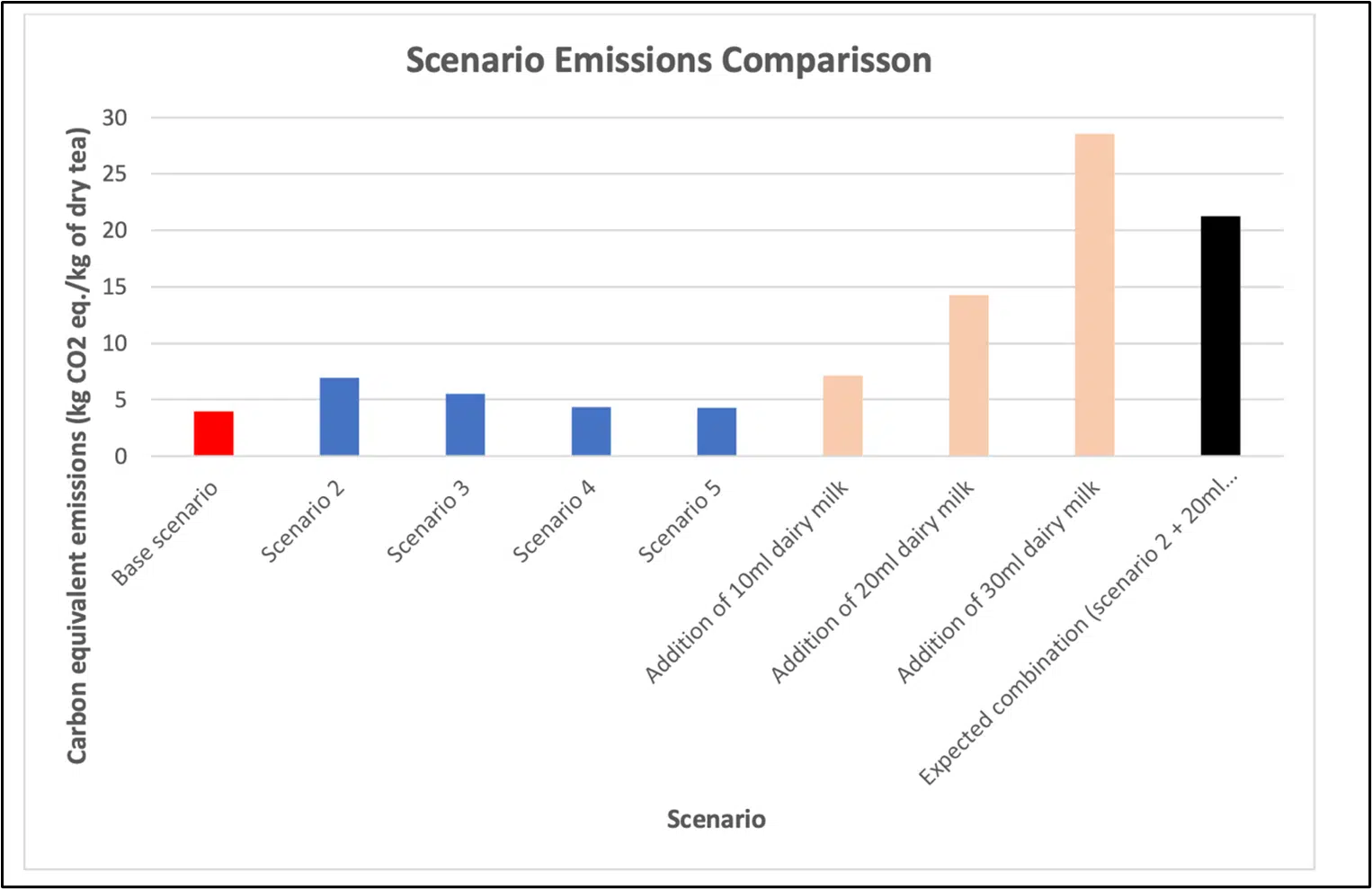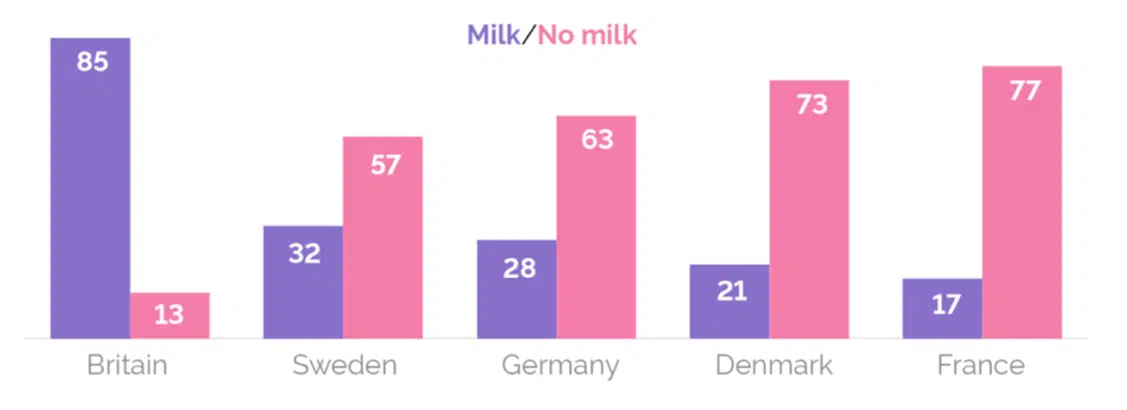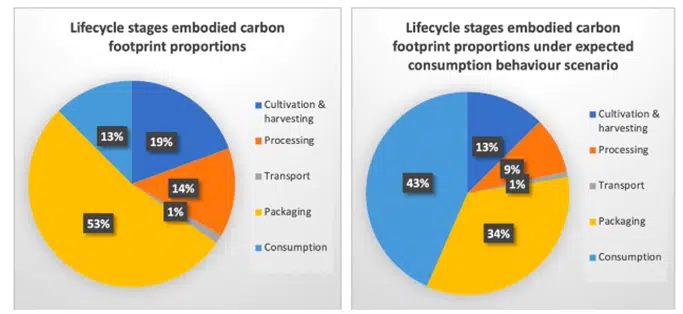Blog, Carbon Footprint, News
The Carbon Footprint of a Cup of Tea
When you make a cup of tea, you probably aren’t thinking about it’s carbon footprint. However this article by Jack Pearce from Circular Ecology, shows that changing the way we drink our tea may actually have an effect on the environment.
Globally, the tea industry is worth $40 billion. In the UK alone, we consume over 100 million cups of tea each day! The tea production process is extremely rigorous and often involves many stages across different regions of the world. The carbon impact of these processes is surprisingly understudied.
This study investigates the carbon footprint of a cup of tea. It covers all stages of the production process and quantifies the associated carbon emissions. The outcomes show that consumer behaviour causes highly sensitive results. Therefore, recommendations into the way we purchase and drink tea are key to reducing the carbon footprint.
The impact of increasing temperatures on agriculture
Climate change poses a significant threat to humanity. It is known that agricultural practices aggravate climate change by increasing greenhouse gas (GHG) emissions; the resulting global temperature increase is predicted to substantially decrease tea crop yields over the next 30 years.
Figure 1 shows the impact of a 3°C global temperature increase on crop yields by 2050. The major tea producing countries, China, India, and Sri Lanka are likely to be negatively affected by global warming.
The impact on India in particular, has previously been discussed by BBC News.
Figure 1. Estimated impact of + 3°C change on crop yields by 2050 – Khadka (2014)
Challenges facing the tea industry
As a major beverage, improving the sustainable production, consumer behaviours and resource efficiency of tea, has the potential to aid global sustainability goals. Such as those in the Sustainable Development Agenda and COP26.
China has the largest tea production in the world, but traditionalist methods have left the industry falling behind in environmental standards.
In the UK, cultural habits of using teabags, overfilling kettles and using milk, also contribute greatly to the carbon footprint.
Scope of the Study
We have conducted a cradle-to-grave life-cycle assessment to assess the carbon footprint of tea across major tea producing Chinese provinces up until the tea is consumed in the UK.
Overview of results
Results show that although packaging is a large contributor to the carbon footprint of a cup of tea, the footprint is also highly influences by consumer behaviour. The total footprint is 31.5 kg CO2e per kg of tea (53% packaging, 13% consumption) in the base case. When considering kettle overfilling and the addition of dairy milk however, increases this to 46.4 kgCO2e per kg of tea (34% packaging, 43% consumption).
This article focuses only on the consumption stage, however, the wider study suggests that the carbon footprint could be realistically halved to 16.5 kgCO2e per kg of tea. This is achieved through more sustainable packaging, like the UK brand Bird & Blend have developed. Changes to consumer behaviour and the implementation of innovative technology are also essential. Additionally, the carbon footprint of tea can be reduced through efficient use of organic fertilisers, appliance efficiency and reduced diesel usage.
Figure 2. Stages of the tea life cycle.
Which stage of the life cycle has the highest carbon footprint?
Previous studies have generally estimated the consumption stages to be the largest contributor to the carbon footprint. Most of these studies however, are based on consumption habits from countries with an inefficient electricity grid. As well as this, other research is outdated and doesn’t incorporate renewable energy.
The 2019 GHG conversion factors from DEFRA show a 10% decrease in the UK electricity CO2e factor compared to the previous year. A 9% decrease in the 2020 update and a further 9% decrease in the 2021 update. These improvements are all attributed to a decrease in coal use in electricity generation and an increase of renewable energy generation supplied to the grid (DEFRA, 2021).
Figure 4. Comparison of the carbon footprint of the consumer stage of the tea life cycle with other similar studies.
However, other studies have found that the impact of the consumption stage is highly sensitive to consumer behaviour. McCombie (2014) found that three-quarters of British households overfill their kettles. Consumer behaviour is a key area to evaluate when assessing the carbon footprint of a cup of tea.
Considering different consumption scenarios
There is no data on exactly how much we are overfilling our kettles. But, if we assume we are using twice as much than needed (500 ml), the GWP (global warming potential) of tea increases by 76%.
Table 1. The impact of subtle variations in how we make our tea
Figure 5. Comparison of consumption methods with the base study (no overfilling or addition of milk)
Boiling excess water and adding milk is a mainstay of UK consumer behaviour that and significantly increases the carbon footprint. Making lifestyle changes to these long standing habits is a big cultural change.
Filling a kettle to its capacity once a day is convenient. Furthermore, it is uncommon to drink black tea in the UK. Converting people to drink tea black like other European countries (Figure 6) is unlikely. But tea drinkers may be more easily convinced to use non-dairy milk.
Figure 6. European comparison of milk-in-tea consumers (YouGov, 2020)
Impact on the overall carbon footprint
Carrying out the assessment using the inclusion of milk and an overfilled kettle, (Figure 4 Scenario 2 + 20ml milk) increases the overall impact of the consumption stage from 13% of the total carbon impact, to 43%.
Figure 6. Overall carbon footprint of tea lifecycle (left) and typical UK consumer behavioural influence on overall carbon footprint (right)
Considering the wider impacts and challenges of the industry
Although this article emphasises the effects the consumer has on the carbon footprint of a cup of tea, it is important to recognise that each stage of the life-cycle presents an opportunity to improve the impact.
When considering the potential threat of climate change on tea yields, the main aim of agriculture is to secure livelihoods for rural farmers. To encourage farmers to adopt climate change mitigation practices, the focus should be on the financial, social, and environmental co-benefits.
For large corporations that source tea, reporting on their environmental and social performance will become an essential part to their business and marketing strategy.
Additionally, companies must respond to the demand for transparency in terms of sustainability. It is essential that large international tea brands have climate related CSR objectives in their corporate strategies throughout their supply chain. This will help support the entire tea supply chain in mitigating the effects of climate change within tea production.
Check back for part 2 of this article, where we will explore the impact of using different varieties of milk.
Also, you can also register for our monthly newsletter at the bottom of this page, to be notified of our new articles.
Original research available on request
Royalty Free Featured Image Source: https://unsplash.com/photos/B43a-FPxYqU

